Volume 6 | Number 1 | May 2014
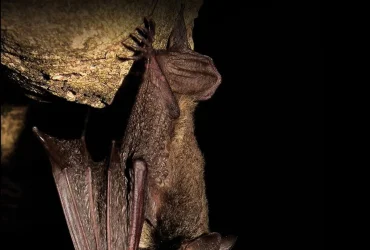 v6i1.132
v6i1.132ISSN: 1800-427X (print)
eISSN: 1800-427X (online)
DOI:10.47605/tapro.v6i1.132
Submitted date: 11 January 2014
Accepted date: 18 March 2014
Published date: 29 June 2014
Pp. 59.
Ceratophora stoddartii from Kegalle District (Sabaragamuwa Province), Sri Lanka
U.S.C. Udagedara & K.A.P.M.K. Karunarathna
*Corresponding author. E-mail: uscudagedara@gmail.com
The rhino-horned lizard Ceratophora stoddartii Gray, 1835 is endemic to Sri Lanka and is locally considered as Endangered. It is found in several montane and submontane habitats: Horton Plains, Hakgala, Namunukula Peak, Peak Wilderness, Haputale, Nuwara Eliya, Maratenna, Balangoda, Pattipola, Pidurutalagala, Ohiya, Kandapola, and Galaha. This slow moving lizard has been previously recorded around 1200–2200m asl. During January–August 2012 we observed ten (four adult males, five adult females and a juvenile) individual lizards at the Moratiya Estate (Maligawa Kanda) forest (near Dothalu-oya), Aranayake, (Kegalle District) Sri Lanka (7°07’10”N, 80°26'28” E) at an elevation of ~1000m. This is the first record of this species from Kegalle District. The habitat is geographically isolated from the Hatton plateau of the central highlands by a series of valleys and consists of submontane vegetation. The nearest previously recorded location is Galaha which is 30 km direct distance away in a northeasterly direction. The females at the Moratiya Estate were 78.2–81.1mm SVL (2.8–4.1mm horn length). The males were 72.7–81.2mm SVL (4.8–6.6mm horn length). All the adult individuals were found on the forest floor and the juvenile on a Strobilanthes leaf ~50cm above the ground. The Moratiya Estate forest is threatened by logging, man-made fire and the converting of forest to tea growing.
Section Editor: Thasun Amarasinghe
eISSN: 1800-427X (online)
DOI:10.47605/tapro.v6i1.132
Submitted date: 11 January 2014
Accepted date: 18 March 2014
Published date: 29 June 2014
Pp. 59.
Ceratophora stoddartii from Kegalle District (Sabaragamuwa Province), Sri Lanka
U.S.C. Udagedara & K.A.P.M.K. Karunarathna
*Corresponding author. E-mail: uscudagedara@gmail.com
The rhino-horned lizard Ceratophora stoddartii Gray, 1835 is endemic to Sri Lanka and is locally considered as Endangered. It is found in several montane and submontane habitats: Horton Plains, Hakgala, Namunukula Peak, Peak Wilderness, Haputale, Nuwara Eliya, Maratenna, Balangoda, Pattipola, Pidurutalagala, Ohiya, Kandapola, and Galaha. This slow moving lizard has been previously recorded around 1200–2200m asl. During January–August 2012 we observed ten (four adult males, five adult females and a juvenile) individual lizards at the Moratiya Estate (Maligawa Kanda) forest (near Dothalu-oya), Aranayake, (Kegalle District) Sri Lanka (7°07’10”N, 80°26'28” E) at an elevation of ~1000m. This is the first record of this species from Kegalle District. The habitat is geographically isolated from the Hatton plateau of the central highlands by a series of valleys and consists of submontane vegetation. The nearest previously recorded location is Galaha which is 30 km direct distance away in a northeasterly direction. The females at the Moratiya Estate were 78.2–81.1mm SVL (2.8–4.1mm horn length). The males were 72.7–81.2mm SVL (4.8–6.6mm horn length). All the adult individuals were found on the forest floor and the juvenile on a Strobilanthes leaf ~50cm above the ground. The Moratiya Estate forest is threatened by logging, man-made fire and the converting of forest to tea growing.
Section Editor: Thasun Amarasinghe
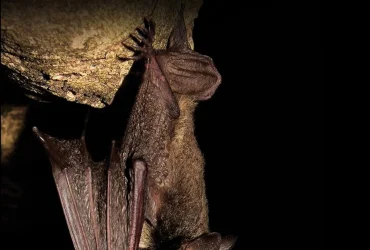 v6i1.131
v6i1.131ISSN: 1800-427X (print)
eISSN: 1800-427X (online)
DOI:10.47605/tapro.v6i1.131
Submitted date: 23 August 2013
Accepted date: 17 May 2014
Published date: 29 June 2014
Pp. 56–58, Pls. 10–11.
On the herpetofauna in Loi Bher Wildlife Park, Rawalpindi, Pakistan
M. Rais*, J. Rehman, S. Baloch, S.M. Ali & I. Hussain
*Corresponding author. E-mail: sahil@uaar.edu.pk
The amphibian and reptilian species are considered excellent indicators of the relative amounts of microhabitats in any ecosystem, and features such as lotic water, permanent & temporary lentic water, rock & litter/debris vegetation, live vegetation, dead vegetation, plant species, and soil are important determinants of herpetofaunal abundance. The study on habitat preferences enables to comprehend ecological role and to predict the effect of habitat change on a species. Such studies are also very crucial for not only sustaining the species in captivity but also for designing their conservation strategies in the natural environment. The available literature lacks any significant work on the abundance of herpetofauna and its association with habitats in various ecological zones of Pakistan. Khan (2006) has provided a general account of all known herpetofauna of Pakistan. Masroor (2011) has given an annotated checklist of herpetofauna of Margalla Hills National Park, Islamabad. Tabassum et al. (2011) have estimated population of skittering and bull-frogs in Rawal Lake, Islamabad. Thus far little effort has been expended on establishing a standardized monitoring program for herpetofauna mainly because of paucity of data pertaining to habitat requirements and partitioning.
Section Editor: Gernot Vogel
eISSN: 1800-427X (online)
DOI:10.47605/tapro.v6i1.131
Submitted date: 23 August 2013
Accepted date: 17 May 2014
Published date: 29 June 2014
Pp. 56–58, Pls. 10–11.
On the herpetofauna in Loi Bher Wildlife Park, Rawalpindi, Pakistan
M. Rais*, J. Rehman, S. Baloch, S.M. Ali & I. Hussain
*Corresponding author. E-mail: sahil@uaar.edu.pk
The amphibian and reptilian species are considered excellent indicators of the relative amounts of microhabitats in any ecosystem, and features such as lotic water, permanent & temporary lentic water, rock & litter/debris vegetation, live vegetation, dead vegetation, plant species, and soil are important determinants of herpetofaunal abundance. The study on habitat preferences enables to comprehend ecological role and to predict the effect of habitat change on a species. Such studies are also very crucial for not only sustaining the species in captivity but also for designing their conservation strategies in the natural environment. The available literature lacks any significant work on the abundance of herpetofauna and its association with habitats in various ecological zones of Pakistan. Khan (2006) has provided a general account of all known herpetofauna of Pakistan. Masroor (2011) has given an annotated checklist of herpetofauna of Margalla Hills National Park, Islamabad. Tabassum et al. (2011) have estimated population of skittering and bull-frogs in Rawal Lake, Islamabad. Thus far little effort has been expended on establishing a standardized monitoring program for herpetofauna mainly because of paucity of data pertaining to habitat requirements and partitioning.
Section Editor: Gernot Vogel
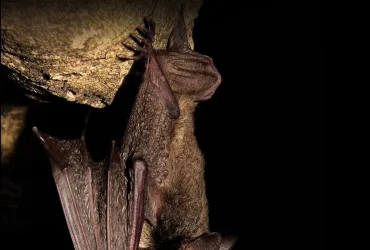 v6i1.130
v6i1.130ISSN: 1800-427X (print)
eISSN: 1800-427X (online)
DOI:10.47605/tapro.v6i1.130
Submitted date: 22 March 2014
Accepted date: 23 April 2014
Published date: 29 June 2014
Pp. 55.
Hemidactylus treutleri from Eastern Ghats, Andhra Pradesh, India
B.L. Narayana*, G. Surender & V.V. Rao
*Corresponding author. E-mail: narayana.laxmi8@gmail.com
The genus Hemidactylus is represented by 25 species in India. Hemidactylus treutleri Mahony, 2009 was described from the Golconda Fort, Hyderabad, Andhra Pradesh. Since Mahony in 2009 only one new locality has been reported, at Rishi Valley, Tirupathi foothills, Andhra Pradesh. On 11 December 2012 at 13:43 h we found an individual of Hemidactylus treutleri on a rocky surface at Peddagattu village (16°36'23.86"N, 79°14'14.19"E), Nalgonda District, Andhra Pradesh. This was during the project of “Base line studies on flora and fauna of the Lambapur, proposed for uranium mining” which was funded by Board of Research and Nuclear Sciences (BRNS). The individual was identified using the diagnosed characters stated in Mahony (2009). The location lies in a biodiversity rich zone of the Eastern Ghats and the habitats mostly consist of dry deciduous forest composed largely of herbs together with a few shrubs and rarely trees and thorn forests. The other sympatric Hemidactylus gecko species recorded include H. frenatus, H. brooki, and Hemidactylus leschenaultii. The present record is 130 km away from the type locality of Mahony (2009) and 336 km away from the second record of Sreekar (2010).
Section Editor: John Rudge
eISSN: 1800-427X (online)
DOI:10.47605/tapro.v6i1.130
Submitted date: 22 March 2014
Accepted date: 23 April 2014
Published date: 29 June 2014
Pp. 55.
Hemidactylus treutleri from Eastern Ghats, Andhra Pradesh, India
B.L. Narayana*, G. Surender & V.V. Rao
*Corresponding author. E-mail: narayana.laxmi8@gmail.com
The genus Hemidactylus is represented by 25 species in India. Hemidactylus treutleri Mahony, 2009 was described from the Golconda Fort, Hyderabad, Andhra Pradesh. Since Mahony in 2009 only one new locality has been reported, at Rishi Valley, Tirupathi foothills, Andhra Pradesh. On 11 December 2012 at 13:43 h we found an individual of Hemidactylus treutleri on a rocky surface at Peddagattu village (16°36'23.86"N, 79°14'14.19"E), Nalgonda District, Andhra Pradesh. This was during the project of “Base line studies on flora and fauna of the Lambapur, proposed for uranium mining” which was funded by Board of Research and Nuclear Sciences (BRNS). The individual was identified using the diagnosed characters stated in Mahony (2009). The location lies in a biodiversity rich zone of the Eastern Ghats and the habitats mostly consist of dry deciduous forest composed largely of herbs together with a few shrubs and rarely trees and thorn forests. The other sympatric Hemidactylus gecko species recorded include H. frenatus, H. brooki, and Hemidactylus leschenaultii. The present record is 130 km away from the type locality of Mahony (2009) and 336 km away from the second record of Sreekar (2010).
Section Editor: John Rudge
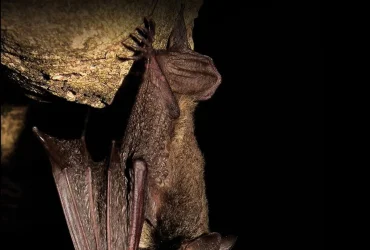 v6i1.129
v6i1.129ISSN: 1800-427X (print)
eISSN: 1800-427X (online)
DOI:10.47605/tapro.v6i1.129
Submitted date: 11 January 2013
Accepted date: 18 March 2014
Published date: 29 June 2014
Pp. 53–54.
First confirmed record of Calodactylodes aureus (Reptilia) from Karnataka, India
B. Srinivasulu*, C. Srinivasulu, T.A. Shah, G. Devender & H. Kaur
*Corresponding author. E-mail: bharisrini@gmail.com
The Indian Golden Gecko Calodactylodes aureus (Beddome, 1870) was known originally from the Tirupati hills in the Seshachalam range and the Velikonda range. It is listed under Schedule I of the Indian Wildlife Protection Act (1972) as it was considered rare, being found at the time only in the Seshachalam range. Subsequently, researchers have revealed the presence of this species from the Papikonda Hills (Perantalapally) in Khammam District, Maredumilli in East Godavari District, Araku Valley and Ananthagiri Hills in Vishakhapatnam District and Kadapa Hills from Andhra Pradesh, Niyamgiri hill ranges of Rayagada, Kalahandi Districts in Odhisha and Vellore and Balmathi Hill, Tamil Nadu. Furthermore, this species was recently reported from Sathgar Hill, Kailasagiri Hill (Ambur) and Valli Malai in Vellore District, Sayed Basha Malai in Krishnagiri District, Nedumkunam Hill, Melthiruvadathanur (Morambu), Karadi Parai and Sathanur Dam in Tiruvanamalai District and the Gingee Hills in Villupuram District of Tamil Nadu. Reddy et al. (2013) reported the occurrence of this species from Nigidi reserve forest area in the Anantapur District of Andhra Pradesh and this is the westernmost locality record of this species to date.
Section Editor: John Rudge
eISSN: 1800-427X (online)
DOI:10.47605/tapro.v6i1.129
Submitted date: 11 January 2013
Accepted date: 18 March 2014
Published date: 29 June 2014
Pp. 53–54.
First confirmed record of Calodactylodes aureus (Reptilia) from Karnataka, India
B. Srinivasulu*, C. Srinivasulu, T.A. Shah, G. Devender & H. Kaur
*Corresponding author. E-mail: bharisrini@gmail.com
The Indian Golden Gecko Calodactylodes aureus (Beddome, 1870) was known originally from the Tirupati hills in the Seshachalam range and the Velikonda range. It is listed under Schedule I of the Indian Wildlife Protection Act (1972) as it was considered rare, being found at the time only in the Seshachalam range. Subsequently, researchers have revealed the presence of this species from the Papikonda Hills (Perantalapally) in Khammam District, Maredumilli in East Godavari District, Araku Valley and Ananthagiri Hills in Vishakhapatnam District and Kadapa Hills from Andhra Pradesh, Niyamgiri hill ranges of Rayagada, Kalahandi Districts in Odhisha and Vellore and Balmathi Hill, Tamil Nadu. Furthermore, this species was recently reported from Sathgar Hill, Kailasagiri Hill (Ambur) and Valli Malai in Vellore District, Sayed Basha Malai in Krishnagiri District, Nedumkunam Hill, Melthiruvadathanur (Morambu), Karadi Parai and Sathanur Dam in Tiruvanamalai District and the Gingee Hills in Villupuram District of Tamil Nadu. Reddy et al. (2013) reported the occurrence of this species from Nigidi reserve forest area in the Anantapur District of Andhra Pradesh and this is the westernmost locality record of this species to date.
Section Editor: John Rudge
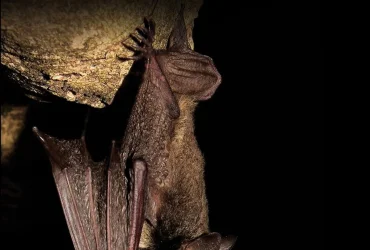 v6i1.128
v6i1.128ISSN: 1800-427X (print)
eISSN: 1800-427X (online)
DOI:10.47605/tapro.v6i1.128
Submitted date: 23 November 2013
Accepted date: 2 April 2014
Published date: 29 June 2014
Pp. 49–52.
Marine Mollusc Diversity along the Southwest Coast of Sri Lanka
C.H.T. Rubesinghe & S.R. Krishnarajah
*Corresponding author. E-mail: dentallium@gmail.com
Molluscan species as well as class-level diversity is highest in the marine environment. The current survey data reveals that Sri Lanka is inhabited by about 240 species of marine molluscs belonging to four of the seven classes representing marine molluscs. The study area, along the southwest coast of Sri Lanka, experiences the southwest monsoon from May to September, which has a significant impact on climate and oceanographic conditions in this region.
Section Editor: Brenden Holland
eISSN: 1800-427X (online)
DOI:10.47605/tapro.v6i1.128
Submitted date: 23 November 2013
Accepted date: 2 April 2014
Published date: 29 June 2014
Pp. 49–52.
Marine Mollusc Diversity along the Southwest Coast of Sri Lanka
C.H.T. Rubesinghe & S.R. Krishnarajah
*Corresponding author. E-mail: dentallium@gmail.com
Molluscan species as well as class-level diversity is highest in the marine environment. The current survey data reveals that Sri Lanka is inhabited by about 240 species of marine molluscs belonging to four of the seven classes representing marine molluscs. The study area, along the southwest coast of Sri Lanka, experiences the southwest monsoon from May to September, which has a significant impact on climate and oceanographic conditions in this region.
Section Editor: Brenden Holland
Hubungi Kami
The ultimate aim of the journal is to provide an effective medium for communication of the latest and best scientific information.
Copyright © 2020 Taprobanica. All Rights Reserved
Jasa Pembuatan Website by IKT




